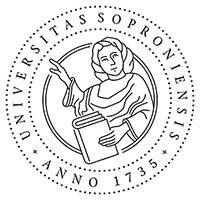Social Network Diffusion in Online and Real Spaces
Abstract
Internet is a dominant medium in this millenium, and we can not only look at it as injurious – non injurious dichotomy. I researched a lot of trends in my discussion, along with what we can set at the concepts and what we use for the web technologies in education. We can see the various online communities with it. And how these communities form children's social activity.
References
Babarczy Eszter (2005): Social software. Mokk. Budapest.
Benkler, Yochai (2006): Coase’s Penguin, or, Linux and The Nature of the Firm. The Yale Law Journal. Vol. 112. doi: https://doi.org/10.2307/1562247
Magyar Információs Társadalom. Éves jelentés 2006. MITJ.
Nie, Norman h. és Erbring, Lutz (2000): Internet and Society. Stanford Institute for the Quan-titative Study of Society.
Norris, Pippa (2001): Digital Divide? Civic Engagement, Information Poverty and the Internet in Democratic Societies, Cambridge University Press. doi: https://doi.org/10.1017/CBO9781139164887
Putnam, R.D. (2000): Bowling Alone. The Collapse and Revival of American Community Simon & Schuster. New York. doi: https://doi.org/10.1145/358916.361990
Rogers E. M. (1995): Diffusion of Innovations, 4th Edition. NY: Free Press.
Wellman, Barry (2001): Computer Networks as Social Networks. Computer and Science, Vol. 293. 2001. 09. doi: https://doi.org/10.1126/science.1065547
Downloads
Published
Issue
Section
License
Copyright (c) 2011 Barkóczy László

This work is licensed under a Creative Commons Attribution-NonCommercial-NoDerivatives 4.0 International License.








